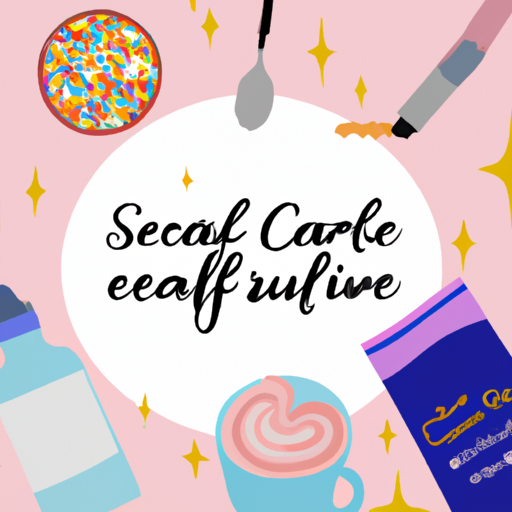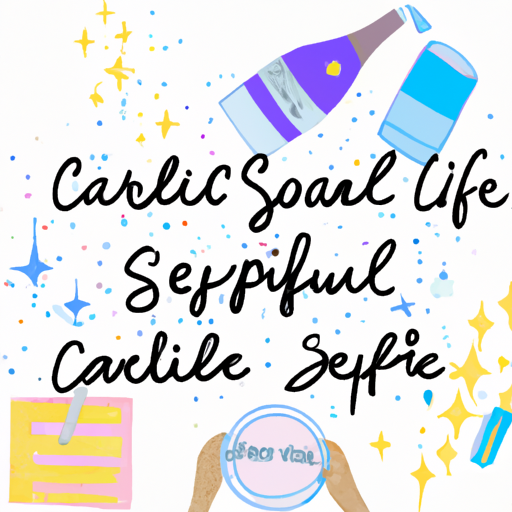What Does Self Care Really Involve?
Understanding Self-Care Involvement: A Comprehensive Guide
Self-care involvement is an essential aspect of maintaining a healthy lifestyle. It’s not just about maintaining physical health, but mental and emotional wellbeing too. This comprehensive guide aims to help you understand and incorporate self-care into your daily life.
Exercise as a Form of Self-Care
Exercise is a crucial part of self-care. It can sometimes feel like a chore, but it doesn’t have to. If you dread early morning runs or gym sessions, don’t force yourself into these routines. Instead, find an activity that brings you joy. It could be anything from dancing to swimming, biking, hiking with your beloved pet, or even joining a kettlebell swing class. The idea is to make your workout routine enjoyable, not torturous.
Remember to approach exercise with a mindset of self-love and care for your body, not as a punishment or obligation. If you enjoy the activity, you’re more likely to stay committed in the long run. So, if your current routine doesn’t spark joy, don’t hesitate to try something new.
Self-Care Involves Learning to Cook
Another excellent way to embrace self-care is by learning to cook. It’s not just about feeding yourself, but also about the joy and satisfaction derived from creating your own meals. Cooking can be therapeutic, allowing you to express creativity and love for your body.
When you cook your food, you control what goes into your meals. You can limit unhealthy additives like excessive salt, sugar, and fats, and instead, use flavorful herbs and spices. Websites like Pinterest or subscription boxes offering easy-to-follow recipes are great starting points. As you grow more confident, you can explore more complex dishes.
Indulge, But Do So Carefully
While self-care involves treating your body and mind well, it also means allowing yourself to indulge sometimes. Whether it’s enjoying a slice of chocolate cake, sipping a glass of wine at a party, or spending a lazy Sunday in bed, these indulgences can contribute to your overall happiness.
However, the key is to indulge responsibly. Overindulgence can blur the fine line between self-care and self-destruction. It’s essential to enjoy these treats occasionally without letting them become a daily habit that could harm your health and wellbeing.
Self-care is all about balance. It’s about treating yourself well, nourishing your body, and giving it the care it needs while also allowing yourself to enjoy life’s pleasures occasionally.
How do you practice self-care? Are there things you do that could potentially toe the line of self-destruction? It’s important to reflect on these questions as part of your self-care involvement journey.
Remember, self-care is a personal journey. It’s different for everyone. What matters most is that it feels good for you, both physically and mentally.
So, start today, involve self-care in your routine, and cherish the positive changes it brings in your life!
| Activities | Benefits | Risks |
|---|---|---|
| Running | Improves cardiovascular health, boosts mood, helps in weight management | Potential injuries if not done correctly, might feel like a chore if not enjoyed |
| Gym workout | Improves strength, flexibility and bone density, helps in weight loss | Can be monotonous if not varied, risk of injuries if not guided properly |
| Dancing | Improves coordination, muscle tone, and flexibility, fun and enjoyable | Potential injuries, can be challenging for individuals with coordination issues |
| Swimming | Low impact, good for cardiovascular health and muscle toning, calming effect | Requires access to a pool, risk of drowning if not proficient |
| Bike rides | Improves cardiovascular fitness and lower body strength, low impact, can be done outdoors | Risk of accidents, requires a bike and safe place to ride |
| Long hikes | Improves cardiovascular fitness and muscle strength, promotes mental well-being | Requires access to safe hiking trails, can be strenuous for beginners |
| Ice skating | Improves balance and coordination, strengthens lower body muscles | Risk of falling and injuries, requires access to an ice rink |
| Kettlebell swing class | Improves strength and cardiovascular fitness, burns calories, can be fun and challenging | Risk of injuries if not done correctly, requires access to kettlebells and proper instruction |
| Cooking | Control over ingredients, promotes healthier eating, can be relaxing and enjoyable | Time-consuming, requires learning and practice, potential kitchen accidents |
| Indulgence (e.g., wine, cake) | Provides enjoyment and relaxation, can be part of social activities | May lead to unhealthy habits if done excessively, risk of addiction |

Deepening Your Understanding of Self-Care
Self-care is a broad concept that involves taking steps to improve your physical, emotional, and mental wellbeing. It’s about making conscious decisions to improve your health and happiness. This could mean anything from taking a walk outside to meditating, reading a book, or taking a hot bath. The key aspect here is to recognize your needs and take steps to meet them.
Mental Health and Self-Care
While physical health is often the focus of self-care, mental health is equally important. Activities such as meditation, yoga, and mindfulness can help reduce stress and anxiety, improving mental wellbeing.
It’s also crucial to set boundaries to protect your mental health. This could mean saying no to additional responsibilities at work, limiting time spent on social media, or distancing yourself from toxic relationships. Remember, it’s okay to prioritize your mental health.
Emotional Self-Care
Emotional self-care is about acknowledging and expressing your feelings. This could involve journaling, speaking to a therapist, or confiding in a trusted friend. It’s important to recognize that emotions are a natural part of being human, and it’s okay to feel them.
Activities such as art, music, and dance can also serve as outlets for emotional expression. Find what works for you and incorporate it into your self-care routine.
Social Self-Care
Social self-care involves nurturing relationships that make you happy. This could mean spending time with loved ones, making new friends, or participating in social activities. On the other hand, it could also mean taking time for solitude if you’re introverted and recharge better alone.
Remember, it’s okay to set boundaries in relationships. If a relationship is causing you stress or harm, it’s okay to distance yourself or seek help.
Practical Self-Care
Practical self-care involves taking steps to make your life easier. This could mean organizing your living space, setting up a budget, or meal prepping for the week. By taking care of these practical aspects, you can reduce stress and free up time and energy for other forms of self-care.
FAQs about Self-Care Involvement
Is self-care selfish?
No, self-care is not selfish. It’s about taking care of your wellbeing so you can show up as the best version of yourself in all areas of your life.
How often should I practice self-care?
Self-care is best practiced regularly. This could mean daily, weekly, or whatever frequency works best for you. Remember, it’s not about perfection but consistency.
What if I don’t have time for self-care?
Self-care doesn’t have to be time-consuming. Even small actions like taking a few deep breaths, drinking a glass of water, or spending a few minutes in nature can be forms of self-care. It’s about finding what works for you and making it a habit.
What if I can’t afford self-care activities?
Self-care doesn’t have to be expensive. Many self-care activities, like walking, meditating, or journaling, are free. It’s about finding what nourishes you and making it a part of your routine.
Can self-care help with mental health issues?
Yes, self-care can be an important part of managing mental health issues. However, it’s not a replacement for professional help. If you’re struggling with mental health issues, it’s important to seek help from a professional.
Conclusion
Self-care involvement is a journey, not a destination. It’s about making small, consistent choices that improve your wellbeing. Remember, there’s no one-size-fits-all approach to self-care. It’s about finding what works for you and making it a part of your routine.
Start today, make self-care a priority, and see the positive changes it brings to your life!
FAQs on Self-Care Involvement
1. What is self-care involvement?
Self-care involvement refers to the active participation in activities that promote physical, mental, and emotional wellbeing. It involves behaviors that improve health, such as proper nutrition, physical activity, adequate sleep, stress management, and more.
2. Why is exercise important in self-care?
Exercise is a vital component of self-care because it helps maintain physical health, reduces stress, improves mood, and enhances overall wellbeing. It’s important to find an exercise routine that you enjoy to stay committed and make it a part of your lifestyle.
3. How does learning to cook contribute to self-care?
Cooking is a form of self-care as it allows you to control what goes into your meals, thus ensuring a healthier diet. It can also be therapeutic as it allows for creative expression.
4. Is indulgence a part of self-care?
Yes, indulgence can be a part of self-care. It’s important to occasionally treat yourself to things you enjoy. However, it’s crucial to maintain a balance and not let these indulgences harm your health or wellbeing.
5. How can I maintain a balance in self-care?
Maintaining a balance in self-care involves taking care of your physical, mental, and emotional health while also allowing yourself to enjoy life’s pleasures occasionally. It’s about treating yourself well, nourishing your body, and giving it the care it needs without overindulging.
6. Is self-care the same for everyone?
No, self-care is a personal journey and it’s different for everyone. What matters most is that it feels good for you, both physically and mentally.
Tables for Self-Care Involvement
| Types of Self-Care | Examples |
|---|---|
| Physical | Exercise, balanced diet, adequate sleep |
| Mental | Meditation, reading, puzzles |
| Emotional | Journaling, therapy, hobbies |
| Social | Spending time with loved ones, socializing with friends, joining clubs or groups |
| Do’s | Don’ts |
|---|---|
| Take care of physical health | Ignore signs of stress or fatigue |
| Engage in activities you enjoy | Force yourself into routines you dread |
| Allow occasional indulgences | Overindulge to the point of self-destruction |
| Seek balance in all aspects | Focus on one aspect of self-care while neglecting others |

